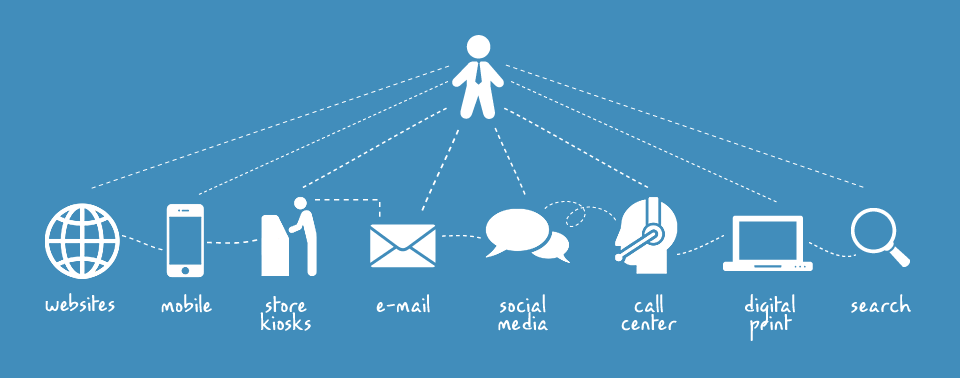
Discover the New Secret of Google: Semantic Search
December 9, 2016
A Complete Guide to Facebook Messenger Bots, if you don’t know what it is.
December 22, 2016
The buyer’s Journey to make a purchase has evolved rapidly.The more technology advances, the more it is integrated into our daily lives and we will continue to see technology become more and more important to our day-to-day living.
We are moving away from“push”-based marketing, and more towards personalized communication with consumers, through different channels.
One example is the advent of the term “Omni-channel” marketing. It is definitely not a new term in the marketing world but just to recap the same. Unfortunately, when it comes to Omni-channel marketing, buyers today are way ahead of most marketers.
So, what is Omni-Channel Marketing?
Omni-Channel marketing refers to a business delivering a consistent and uninterrupted experience across all channels and devices a customer uses to interact with them.More options mean more opportunities for marketers to connect with and engage their markets.
Here are some tips to get you started with your Omni-Channel Marketing strategy.
- Customer-Driven Approach:
You need to map out customer purchase behavior and walk in customer’s shoes. Understanding commonalities in journeys within the target customer segments creates significant advantages in prioritizing sales and marketing programs for different channels.
- Integrate Customer Insights:
It is not enough to optimize your email campaigns or social media campaigns separately. You need to have a holistic view to create an Omni-Channel digital marketing strategy. Your customer is affected by all of your marketing campaigns and messages as a whole, and so your approach should be the same.
- Use Technology To Stay On The Same Page.
You need an advancedtechnology that can support an Omni-Channel digital marketing strategy. Make sure your entire team uses the same platform for all of the digital channels, rather than using one platform for email, another one for social media and another for mobile, etc. Look for a platform that can scale your efforts. It is not only important to assess what technology you currently need, but understand where you are heading to, and whether it can support you there.
Customer experiences can be enhanced by integrating social media platforms. It allows customers to obtain real-time reviews of the products/services they intend to buy on social media platforms.
Inspiring Examples of Companies Using Omni-Channel Marketing Strategy Correctly:
- Apple:
Apple has created the kind of customer loyalty most companies can only dream of. And a big reason for that is the Omni-Channel strategy they have developed.
- Starbucks:
Starbucks has a unique business model compared to most fast-food chains. Rather than franchising out locations, nearly every Starbucks store is owned by the corporate. In addition to the obvious financial benefits, it makes it much easier for Starbucks to manage and unify their customer experience.
Personalization is certainly the focus here.
- Amazon:
Amazon is the pioneer of online shopping. Since the very beginning, they’ve only sold products online, having zero physical representation to customers. They started with books, but now they sell basically everything.
The brands who can best interpret Omni-Channel data and understand all customers are the winners. The buyer’s journey is getting more complicated with different layers. With customers in the driver’s seat, marketers have no option but to play by their rules. Omni-channel marketing is the best step in that direction.
Whether it is B2B or B2C, modern buying behavior is driven by personalized engagement, and this is where Omni-Channel really hits the mark.
Learn different ways to leverage Various channels here.
{{cta(‘41382c5b-f989-42fa-8254-da3bc826e866’)}}


